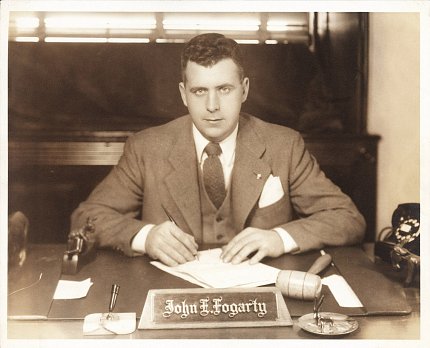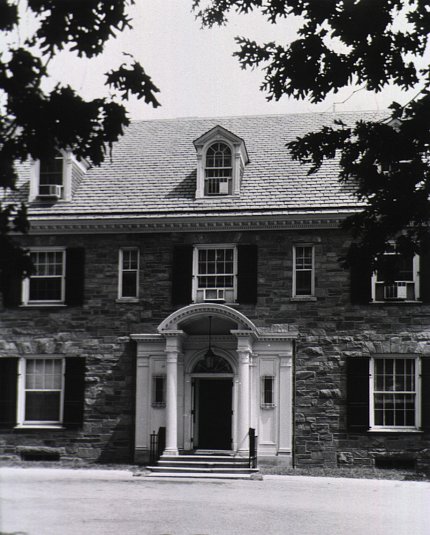Fogarty Celebrates 55 Years of Global Impact

Photo: NLM
July 1 marks 55 years since the creation of the Fogarty International Center (FIC). Named after the late congressman John E. Fogarty of Rhode Island, FIC remains the smallest center at the NIH, but among the most impactful in advancing NIH’s mission of promoting scientific innovation, knowledge exchange and sustainable development across the globe.

Photo: NLM
Though 2023 marks its 55 years, Fogarty’s origins can be traced back to as early as 1948 when the United States implemented the European Recovery Program—popularly known as the “Marshall Plan”—to provide financial and material assistance to participating countries in Western Europe to aid them in rebuilding after the war.
A decade later, NIH launched its version of the Marshall Plan to help strengthen European capacity to conduct biomedical research through the International Research Fellowship (IRF). The fellowship supported foreign investigators who trained at NIH and American academic institutions and returned to Europe’s leading universities and research centers.
Established in 1968, Fogarty took over management of IRF and, during the succeeding three decades, trained more than 2,500 scientists from 55 countries.

Photo: Chia-Chi Charlie Chang
A year later, Fogarty introduced the Scholars in Residence program, bringing renowned scientists from around the world to NIH for extended periods.
Mentored by leading American scientists and Nobel laureates like Drs. Christian Anfinson, Julius Axelrod, David Baltimore, Baruj Benacerraf, Arthur Kornberg and Severo Ochoa, the scholars held seminars and workshops, conducted research and collaborated with NIH colleagues, fostering a stimulating environment for scientific exchange and innovation. Notable trainees from this era include Dr. Albert Sabin, who developed the first oral polio vaccine, and Sir George Godber, the architect of the British National Health Service.

Photo: NLM
In the late 1980s, the AIDS epidemic shifted the focus of the center toward low- and middle-income countries (LMICs). The center played a significant role in building research capacity to combat HIV/AIDS, contributing to the transformation of an HIV diagnosis from a death sentence to a manageable condition. The shift led FIC to reprioritize toward research training programs in areas such as bioethics, genetics, informatics, stigma and health and economic development. These programs aimed to build core foundational capacity in LMICs and empower local researchers to tackle health challenges in their communities.
Such programs were the catalysts for Fogarty’s current mission: to support and facilitate global health research conducted by U.S. and international investigators, build partnerships between health research institutions in the U.S. and abroad, and train the next generation of scientists to address global health needs.
Today, through programs like Launching Future Leaders in Global Health Research Training Program and Global Infectious Disease Research Training Awards, among many others, Fogarty supports scholars from the U.S. and LMICs with a footprint on almost every continent. These trainees, like their notable predecessors, continue to find themselves at the forefront of groundbreaking discoveries in global health.

Photo: Marleen Van Den Neste
Dr. Jessica Manning, one of the first to sequence the Covid-19 genome in southeast Asia in 2020, and Dr. Sikhulile Moyo, who was recognized by TIME magazine in 2022 for his discovery of the Omicron variant, are two examples of the continued impact of Fogarty’s training programs on global health discoveries.
As the center enters its 56th year, searching for a new director and with a renewed focus on equity, innovation and sustainability, FIC remains dedicated to addressing the most pressing health challenges around the globe through collaboration, research and capacity-building.
With support and collaboration from other NIH institutes, centers and offices and its extensive network of intellectual partnerships and research communities built over the last five decades, Fogarty will undoubtedly continue to play a pivotal role in shaping the future of global health research.

Photo: Chia-Chi Charlie Chang
